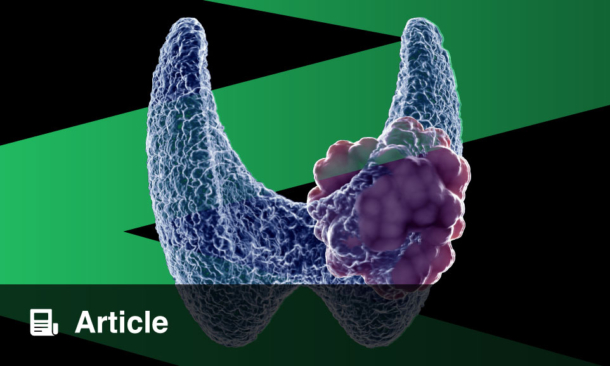Abstract
Obesity is known to affect a high percentage of both adults and children in developed countries. Individuals with obesity are at risk of developing a number of comorbidities, as well as metabolic syndrome, which can create a low-grade systemic inflammatory state that further exacerbates the risk of developing comorbidities. Two systems that are susceptible to obesity-related effects are the musculoskeletal system, which contributes to mobility via the bones, muscles, tendons, and joints, and the eye, which contributes to mobility via fidelity of navigation through the environment. Subsequently, the loss of integrity in these systems can lead to sedentary behaviour, inability to exercise, and increased risk of developing cardiovascular and respiratory diseases, loss of cognition, and falls. This review focusses on the impact of obesity on elements of the musculoskeletal system and the eye, with particular focus on the involvement of inflammation and how this may affect mobility and navigation. Finally, the use of prebiotics in altering the inflammatory state associated with obesity via the gut microbiome is discussed as one approach to address issues related to mobility and navigation.
INTRODUCTION
Obesity has become an epidemic according to many, with >35% of individuals defined as being obese or having obesity in the developed world.1 This epidemic affects adults as well as children and adolescents, and the increasing numbers of affected individuals have led to the condition being officially recognised as a disease. However, it is a highly heterogeneous disease, as a large number of genes have been implicated in obesity or the risk of obesity.2-5 Although the root of this epidemic, which has appeared and gained traction over the past 40 years, is not clear, diets high in fat and sugar have been implicated, as well as sedentary behaviour and genetics and epigenetics.1,6,7
A central issue related to obesity is not obesity itself, but the consequences of the condition on multiple host systems; these include insulin resistance and Type 2 diabetes mellitus (T2DM), elevated risk for cardiovascular disease, increased risk of osteoarthritis (OA) and joint damage, decline in cognitive integrity, sarcopenia, fatty liver disease, and loss of gut integrity.1,7,8 The realisation of these obesity-related risks often also depends on other genetic or epigenetic risks associated with specific tissues or organs.9-12
The question then arises as to whether all or most of the aforementioned obesity-related risks are independent risk factors, or whether there are common elements associated with obesity that could impact a diverse set of target tissues or organs to mediate much of this risk. While not definitive, one possible explanation is the development of an obesity-associated metabolic syndrome (MetS) with an accompanying low-grade inflammatory state.7,8 This inflammatory state may reside in alterations to the host regulation of systemic inflammatory processes and activation of fat depots by excessive energy or fat intake from the diet, but it may also be a consequence of diet-induced alterations to the gut microbiome, with the release of mediators, such as bacterial lipopolysaccharide (LPS), which translocate to the systemic circulation via a ‘leaky’ gut as a result of the diet.7,8 Thus, the inflammatory state of an individual with chronic obesity is the result of a combination of direct dietary effects on host systems, in addition to its impact on the microbiome and associated gut tissues.
These two contributors to disrupted inflammatory regulation can be separated using preclinical models, in which short-term responses to an obesity-inducing environment can be evaluated. Thus, very short-term exposure of rats to a high-fat high-sucrose (HFS) diet can lead to inflammatory changes in some muscles within days,13 before detectable alterations to plasma LPS concentrations can be detected. Over time, the gut-associated parameters and the host parameters may contribute to a chronic state of altered inflammatory regulation. Whether this latter state is completely reversible remains an open question, because with chronicity also comes the risk of epigenetic alterations that may preclude complete reversibility.
As obesity and its associated dysregulation of inflammatory processes is complex, disruption of some systems may be interactive and have synergistic sequelae over time (e.g., T2DM and inflammation during muscle or cardiovascular repair), and not everyone has the same components of MetS disrupted.7,8 However, to address all of the potential areas affected is beyond the scope of this review. Therefore, this review is focussed on those systems that are impacted by inflammation associated with obesity and related to a common and fundamental process of human life: mobility and navigation through the environment. Thus, the loss of integrity of muscles, bones, the cardiovascular system, articulating joints, and cognition have all been implicated as risks of ineffective mobility. With loss of mobility comes an accelerated loss of the integrity of these systems, an inability to lose weight and restore function through exercise, and a downward spiral to early death for many. Humans have evolved to be a highly mobile species, and sedentary behaviour and loss of mobility is detrimental to all systems. Therefore, to combat this obesity epidemic, one needs to be active, mobile, and achieve metabolic regulation or control and restore function.
MUSCLE INTEGRITY WITH OBESITY
Chronically obese individuals often demonstrate muscle damage and loss, termed sarcopenia of obesity.14-16 Muscles are a major target for glucose metabolism and the combination of T2DM and fat accumulation in muscle with subsequent fibrosis and loss of contractile material can lead to the loss of specific muscle function,7 particularly of the lower extremities, with consequences for the integrity of motion segments responsible for mobility.
As it is difficult to assess the path to this chronic state in humans with obesity, many researchers have turned to preclinical models to gain insights into better understanding the sequence of events leading to muscle compromise and whether different muscles are at varying risks of dysfunction. In a rat model of HFS-induced obesity, it has been demonstrated that alterations to the glycolytic stabilising muscle, the vastus lateralis, incur alterations in fat content, fibrosis, and macrophage activation that can be detected as early as 3–7 days after exposure to such a HFS diet, with an appreciable consolidation of changes by 12 weeks on the diet.7,17 In contrast, the oxidative soleus muscle, a postural muscle in the calf, is more resistant to such changes.18 In fact, the soleus muscle can adapt to the HFS diet and exhibit enhanced ability to react to the oxidative stress of metabolic overloading (e.g., induction of superoxide dismutase-2 and succinic acid dehydrogenase). Whether power muscles, such as the medial gastrocnemius, are affected in a unique manner or similar to the vastus lateralis remains to be determined. Thus, not all muscles, even of a motion segment, such as a leg, may respond similarly to a diet-induced challenge leading to obesity and one cannot generalise from the results of studies on a single muscle. However, inflammation via activation of fat in the muscle or via mediator release from activated macrophages can lead to fibrosis and compromise of susceptible muscles.
Another issue regarding obesity, inflammation, and muscle integrity relates to whether the inflammation directly or indirectly affects the integrity of the neuromuscular control systems. As muscles require neural input to affect function, disruption of this control could lead to atrophy and, in the case of obesity, systemic loss of integrity. Loss of the neural component of muscle function, using botulinum toxin injections directly into muscles of the quadriceps complex, leads to loss of muscle integrity with development of fatty deposits and fibrosis.19,20 Therefore, more research related to the neural impact of obesity-associated inflammation on function is warranted.
BONE AND TENDON CHANGES WITH OBESITY
Obesity can lead to infiltration of fat into the bones of both rodent models and humans,21-24 which can contribute to a loss of bone integrity. Of interest, sedentary behaviours, such as prolonged bedrest, can also lead to fat in bone marrow, which can be prevented by exercise,25,26 even in the absence of obesity. Similarly, fat can accumulate in the bone marrow of astronauts on the International Space Station, and thus prolonged exposure to microgravity can also lead to changes in the absence of obesity, possibly due to the default differentiation of bone marrow mesenchymal stem cells.27 Therefore, obesity does impact bones; however, the exact role of inflammation in the process in humans still remains to be clarified.7,22
In preclinical models of diet-induced obesity, deposition and activation of fat within subchondral bone has been detected.21 Thus, bone integrity is put at risk as a result of changes and alterations to tissues closely associated with bone (e.g., the bone marrow). Obesity, likely through low-level systemic inflammation, can also influence bone health via development of diseases such as osteoporosis.23,28 Thus, through direct impact of fat within bone and the marrow cavity, or indirectly via the inflammation associated with obesity and concomitant expression of adipokines and cytokines that can facilitate bone resorption, obesity can affect bone health in multiple ways. As females are more at risk of developing osteoporosis in the absence of obesity, this population may be more adversely impacted than the male population. Second to osteoporosis is the risk for falls and fractures, and, with impairment issues related to gait control,29,30 this risk may be compounded.
Tendons play a critical role in mobility via transmitting muscle forces to move bones, and the integrity of tendons in obesity is also essential in maintaining the function of a motion segment. Studies in humans have shown that ankle tendons of those with higher levels of obesity exhibit more features associated with tendinopathies.31 Recently, it has been reported that, based on ultrasound analysis, asymptomatic disturbances to Achilles tendon integrity can be correlated with obesity.32 Fairley et al.33 reported links between patellar tendinopathy and obesity, and concluded the link was mechanical because it correlated with BMI and not with fat mass. However, these authors did not assess the patients for MetS. Thus, obesity-related disruption of the integrity of multiple components of the motion segment (muscle, tendon, and bone) may contribute to compromised mobility and stability.
DEVELOPMENT OF JOINT DAMAGE IN OBESITY
Individuals with obesity are at higher risk of developing joint diseases, such as knee osteoarthritis, than non-obese individuals.7,34,35 This risk could reside in the increased mechanical load placed on joints like knees, in the dysregulated inflammatory state, or a combination of both factors. However, some reports indicate an increased risk of developing hand OA in individuals with obesity, and the hand may not be subjected to increased loading, so perhaps the risk in obesity resides more with the inflammatory dysregulation.7,8
Recently, it has become apparent that OA does appear to have an inflammatory component related to its progression,36-38 and, thus, a dysregulated inflammatory state in chronic obesity could potentially contribute to the initiation and progression of joint damage and degeneration along with the associated pain.39,40 Relevant to this point are findings from preclinical rat studies, which indicate that diet-induced obesity leads to both systemic alterations to inflammatory mediator expression and local alterations in the synovial fluid of the knee.7 Furthermore, recent studies have indicated that the risk for joint damage is not restricted to just the knee, because the shoulders of the obese rats also experienced damage.41 However, for reasons currently unknown, in these 12-week studies, the hip displayed less joint damage than the knee or shoulder.41 Whether the shoulder risk is related to the fact that rats are quadrupeds is also unclear at this point. However, it is known that obesity is also a risk factor for OA42,43 and pain44 in the shoulder of humans, so issues of obesity and joint involvement in motion and mobility disorders may cross species. Similarly, compared to the knee and shoulder, the hip is a ball and socket joint, a configuration that may protect its integrity in some manner.
POTENTIAL ALTERATIONS TO VISION WITH OBESITY
Individuals with obesity are reported to be at risk of developing some ocular diseases,45 such as macular degeneration,46,47 cataracts,48,49 retinal diseases50 (possibly related to sugar consumption),51 and others.52 Regarding obesity and cataract risk, the findings are still somewhat controversial, because some reports have indicated a negative correlation for a Korean population.53
It is also not clear whether this risk is related to a direct effect of the fat, the dysregulated inflammatory state, or a secondary consequence of obesity related to T2DM and refined sugar consumption. The eye is an immune privileged site,54,55 and disruption of homeostasis via a dysregulated inflammatory system could contribute to the loss of such privilege and allow for inappropriate inflammatory or immune activities within the eye (e.g., via the vitreous humour [VH]), as well as at the level of the cornea. Recently, the authors reported that following the induction of diet-induced obesity, gene expression patterns are altered in VH cells, and that based on a protein array methodology, the protein homeostasis of this fluid is disrupted with the elevated presence of inflammatory mediators.56 While these results have not yet correlated with the ocular changes associated with overt disease processes in the preclinical model or disrupted navigation, this is an area of active research.
In addition, it is not yet possible to directly attribute the changes in the VH of the diet-induced obese rats to the systemic inflammatory alterations detected. Such changes could also be an indirect effect of the joint damage occurring after induction of diet- induced obesity.21,41 In addition, since the recent rat studies used only the 12-week time point post diet-induced obesity to assess joint damage and the VH alterations, it is not yet known whether the joint damage preceded the alterations in the VH of the eye, whether they developed in parallel, or whether the eye alterations preceded the joint damage. Resolution of this issue is the subject of ongoing research.
This issue of eye involvement in obesity is likely to be clinically relevant because humans use their eyes to navigate through their environment. As such, mobility is critical but navigation possibly even more so. However, it is not yet known whether injury to the ankle or the hip also leads to changes in the eye, or whether there is a specific knee–eye or mobility–navigation axis.57 This is an area of active research, as is determining whether this potential axis is unidirectional (knee to eye) or bidirectional (also eye to knee). Thus, mobility is intrinsically integrated with navigation. Furthermore, as skeletally mature adults, humans define where they are in space while they are mobile without overtly thinking about it, but may require more active thinking while learning to be mobile as a young child, or during older age when the integrated systems decline in integrity. Interestingly, postural control in the elderly is adversely affected by vision impairments.58 This latter aspect of mobility likely also involves brain elements associated with memory or specific areas of the brain, such as the hypothalamus59 or other centres.60
The assessment of both normal body weight and individuals with obesity either blindfolded or with uninhibited vision has shown that such interruption of this putative knee–eye axis leads to abnormal gait patterns, with the alterations more pronounced in those with obesity.61-64 Such alterations in gait with obesity have also been observed in dogs.65 Furthermore, Lam et al.66 have recently reported that individuals with obesity have an elevated intraocular pressure compared to sex and normal body weight-matched individuals, and the intraocular pressure of the individuals with obesity declined to more normal levels after weight loss via bariatric surgery. In these studies, which were correlative in nature and did not define cause and effect, it was not determined whether the obese individuals exhibited MetS characteristics or whether their visual acuity was affected by the bariatric surgery; these factors constitute important limitations of the study. While the basis for these increases in patients with obesity remains to be determined, it could potentially be related to increased fluid due to the oedema related to a low-grade inflammation in the eye; further investigation is required to identify the mechanisms involved. While not directly related to obesity, it has been noted that astronauts flying long-duration missions on the International Space Station do experience visual impairments that are linked to globe deformations and increased intracranial pressure due to vascular fluid shifts,67 possibly supporting the concept that increased intraocular pressure in patients with obesity could also lead to visual compromise.
Therefore, potential compromise of ocular integrity via chronic inflammatory changes, such as those associated with obesity, may have more impact on the fidelity of mobility for both new and established patterns of movement, even in the context of walking in a familiar environment with brain elements intact. This may reflect the central nature of a possible knee–eye–brain/neural axis57 that needs to be intact to optimise both mobility and navigation. As all knee joint tissues (and other joints of the body, except for articular cartilage) are innervated, and muscles are dependent on neuroactivation to initiate force generation, the integrity of such an axis of control and regulation may be necessary for optimal mobility and navigation, and obesity and the associated inflammatory state can be considered a threat to such integrity at several points (i.e., muscles, joint integrity, loss of visual integrity). Currently, the evidence for the impact of obesity on navigation suffers somewhat from a paucity of well-designed studies to assess the type and extent of the alterations, as well as mechanistic implications, and, thus, while a potentially important area, it is one that requires further investigation to better understand the impact of obesity on the integration of mobility and navigation.
ADDRESSING THE NEED FOR EFFECTIVE INTERVENTIONS TO PREVENT OR INHIBIT OBESITY-RELATED RISK OF LOSS OF MOBILITY INTEGRITY AND NAVIGATION FIDELITY
It is clear from the previous discussion that obesity, and the inflammatory state associated with it (i.e., MetS), likely impacts host tissues that contribute to effective and energy-efficient mobility and navigation. These include tissues directly involved in mobility (muscles, tendons, and bone), as well as others that contribute to the fidelity of mobility, such as the eyes and the peripheral neural system/brain (via memory control of movement, neural control of muscles, and integration of the functioning of the diverse tissues involved in motion via proprioception, bilateral co-ordination, and avoiding risk).
Potential interventions to re-establish metabolic control include weight loss via diet or bariatric surgery; exercise, alone or in combination with diet and nutrition changes; or the use of prebiotics (substrates that are selectively used by host micro-organisms conferring a health benefit),68 alone or in combination with other modalities. Some options may work better for some patients than others, likely due to the variation in the factors contributing to risk. The conclusion that there is no ‘quick fix’ for obesity is supported by the large number of genes that have been implicated in obesity, and the fact that epigenetic mechanisms also play a role in the development and progression of obesity and MetS-associated inflammation.9-12 It is also unclear to what extent damage and alterations due to obesity or MetS are reversible in musculoskeletal and/or eye tissues. Thus, obesity is likely complex in its control at multiple levels, and, as such, more individualised approaches may be required.
It is also clear that use of prebiotic compounds (usually oligofructose and inulin) can help re-establish metabolic regulation.69-72 Such prebiotics are not metabolised by humans but are used by the gut microbiota to re-orient the microbial community by altering the bacterial species present and correcting the leaky gut syndrome, which allows bacterial LPS to pass into the host.68,73 As LPS is a proinflammatory molecule, such changes could impact the inflammatory component of MetS directly. Such an impact could re-establish muscle integrity, insulin resistance, and better mobility control. It remains to be determined whether such prebiotics can influence a return of the VH to a more normal state and potentially re-establish navigation integrity. Secondly, use of prebiotics by bacteria leads to the generation of short chain fatty acids that can be absorbed and impact host systems,74-76 and whether such metabolites can influence the eye or the proposed circuitry remains to be clarified. Thus, this prebiotic approach has a relatively low cost and could be a beneficial avenue to address some aspects of the impact of obesity.
CONCLUSION
For those with obesity, options are available to help address the impact of obesity on host systems (e.g., diet, exercise, prebiotics, bariatric surgery, and medications), including those related to mobility. However, as with many conditions or diseases, prevention is better than having to deal with the problem once it has become medical. Therefore, an active lifestyle with good nutrition, likely starting very early in life, is the best option to prevent the development of obesity and loss of mobility, which can become a vicious cycle of increasing obesity contributing to increasing loss of mobility and the fidelity of navigation through the environment. While the above is a general approach to prevention, for those with specific genetic or epigenetic risk factors, precision health with better understanding of the risks associated with specific genetic contributions could lead to targeted preventative interventions and protocols to make such interventions more specific and effective.








